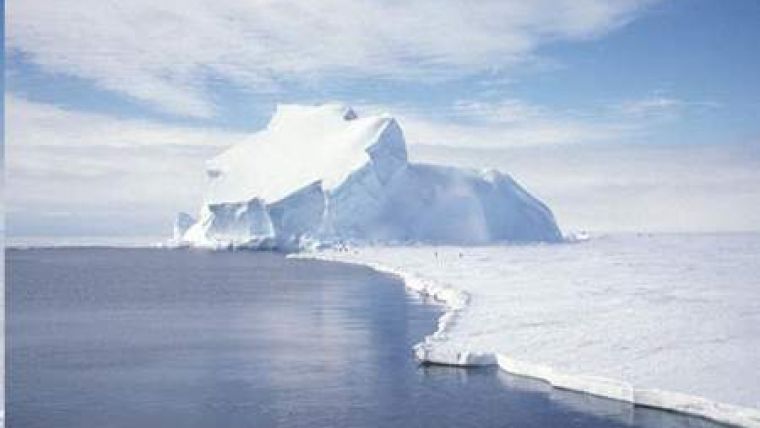Warm Ocean Currents Cause Antarctica Ice Loss
Reporting in the journal Nature, an international team of scientists led by British Antarctic Survey (BAS) has established that warm ocean currents are the dominant cause of recent ice loss from Antarctica. For the first time, new techniques have been able to differentiate between the two known causes of melting ice shelves: warm ocean currents attacking the underside, and warm air melting them from above. This finding brings scientists a step closer to providing reliable projections of future sea-level rise.
Researchers used 4.5 million measurements made by a laser instrument mounted on NASA’s ICESat satellite to map the changing thickness of almost all the floating ice shelves around Antarctica, revealing the pattern of ice-shelf melt across the continent. Of the 54 ice shelves mapped, 20 are being melted by warm ocean currents, most of which are in West Antarctica.
In every case, the inland glaciers that flow down to the coast and feed into these thinning ice shelves have accelerated, draining more ice into the sea and contributing to sea level rise.
Lead author Dr Hamish Pritchard from British Antarctic Survey, which is part of the UK’s Natural Environment Research Council (NERC), said to see a pattern that in all the cases where ice shelves are being melted by the ocean, the inland glaciers are speeding up. It’s this glacier acceleration that’s responsible for most of the increase in ice loss from the continent and this is contributing to sea-level rise. Some ice shelves are thinning by a few metres a year and, in response, the glaciers drain billions of tons of ice into the sea. This supports the idea that ice shelves are important in slowing down the glaciers that feed them, controlling the loss of ice from the Antarctic ice sheet.
He adds the researchers think that it’s linked to changes in wind patterns. Studies have shown that Antarctic winds have changed because of changes in climate and that this has affected the strength and direction of ocean currents. As a result warm water is funnelled beneath the floating ice. These studies and our new results therefore suggest that Antarctica’s glaciers are responding rapidly to a changing climate.
A different picture is seen on the eastern Antarctic Peninsula (the long stretch of land pointing towards South America). Here, the ice-shelf thinning found by this study can be explained by warm summer winds directly melting the snow on the ice-shelf surfaces. Both patterns, of widespread ocean-driven melting and this summer melting on the Antarctic Peninsula, can therefore be attributed to Antarctica’s changing wind patterns.
This research is part of international efforts to improve understanding of the interactions between ice and climate in order to improve the reliability of sea-level rise projections.

Value staying current with hydrography?
Stay on the map with our expertly curated newsletters.
We provide educational insights, industry updates, and inspiring stories from the world of hydrography to help you learn, grow, and navigate your field with confidence. Don't miss out - subscribe today and ensure you're always informed, educated, and inspired by the latest in hydrographic technology and research.
Choose your newsletter(s)
























